Nature in Ryde Cemetery – July 2008
We met up for our July Nature Walk at 6pm and although it had been quite a humid day, a heavy rain shower in the afternoon had cleared the air. The cemetery was bathed in pale yellow evening sunlight and this colour emerged as the theme for our trail because of the abundance of yellow wild flowers.
Birdsfoot Trefoil (image) has added a brightness all over the cemetery, masses of it, on graves, along the paths, amongst grass and in the hedgerows. It is commonly known as ‘bacon and eggs’ because of its rich yolk yellow appearance tinged with meaty red. We also found the paler yellow Hop Trefoil (image) with its small spherical flowerheads.
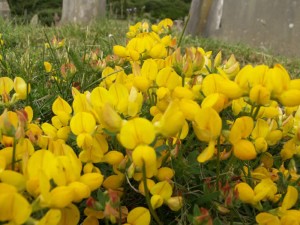
Common Birdsfoot Trefoil
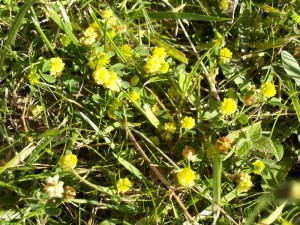
Hop Trefoil
As well as the usual Buttercups, Hawks Beard and Black Meddick, mentioned in previous months, we noticed Cinquefoil, Herb Bennet and lots of Ladies Bedstraw (image below) – all yellow, (although there was also quite a lot of white Hedge Bedstraw.) Near Pellhurst Road we found some Creeping Jenny, a trailing plant with dark green rounded leaves and buttercup type flowers. (image below).
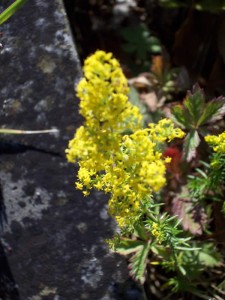
Lady’s Bedstraw
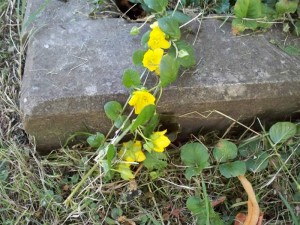
Creeping Jenny
The Dog Daisies are now past their best but the Bindweed is really in its prime with some giant white blooms twisting high up in the hedges. The areas of long meadow grass look very mid summery with their many and varied seed heads.
There are still splashes of blue bugle everywhere, the Herb Robert has faded but the Cranesbill maintains its vibrant blood colour.
The bees seemed quite partial to the abundance of Birdsfoot Trefoil, as well as keeping busy in the red and white clover and honeysuckle. We noticed different varieties such as the white bottomed bee and the larger orange bottomed species! I thought perhaps we should try to be a bit more scientific so I think I have identified the white bottom as a Bombus terrestris (or buff-tailed bumble bee.)
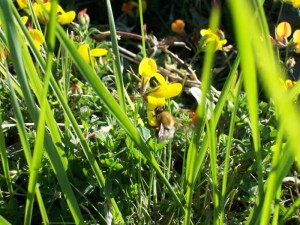
Bombus Terrestris
Bombus terrestris, the buff-tailed bumblebee or large earth bumblebee is one of the most numerous bumblebee species in Europe. They are characterized by their white-ended abdomens. The queen is 2–2.7 cm long, while the workers are 1½–2 cm. (Source From Wikipedia, the free encyclopedia).
There were busy butterflies too, not usually stopping long enough for a photo but we did manage to snap a Meadow Brown (below) and a Red Admiral (below).
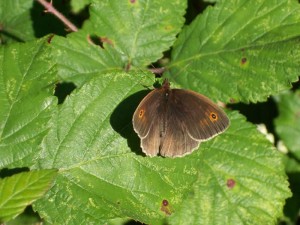
Meadow Brown
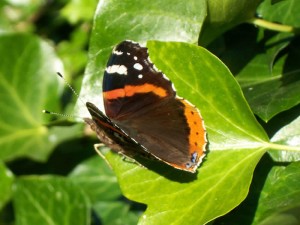
Red Admiral
More nature photographs:
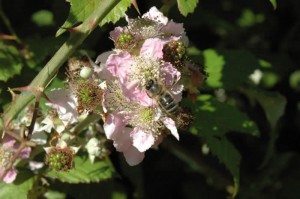
Bee on bramble flower
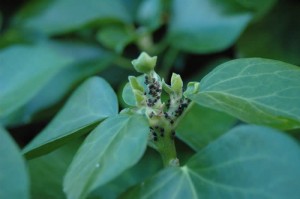
Blackfly on ivy
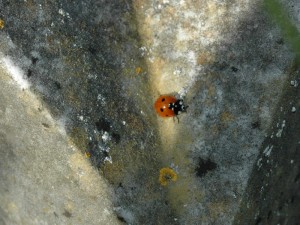
Ladybird
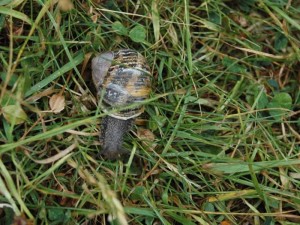
Snail

Six Spot Burnet (moth)
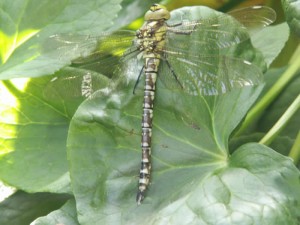
Dragonfly (Southern Hawker)

Caterpillar of Cinnabar Moth
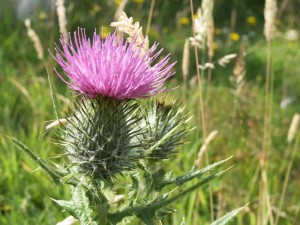
Thistle
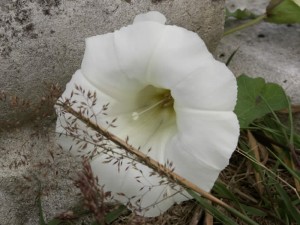
Hedge Bindweed
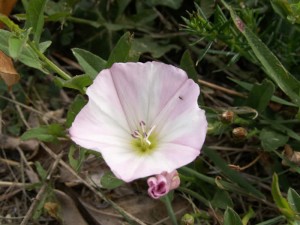
Field Bindweed
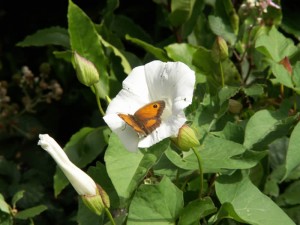
Gatekeeper Butterfly
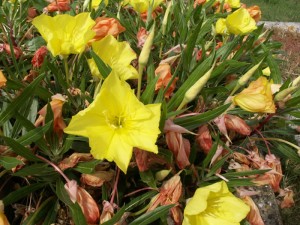
Evening Primrose
The list of plants and insects we find in the cemetery is ever increasing and if, when you visit the cemetery, you should notice anything that would be of interest, please let us know by making contact through the Contact Us page of the website.
Photographs contributed by Maisie Kitching, Carol Strong, Rachael Mead, Kate McDonell, Diana Wood and Janette Gregson

